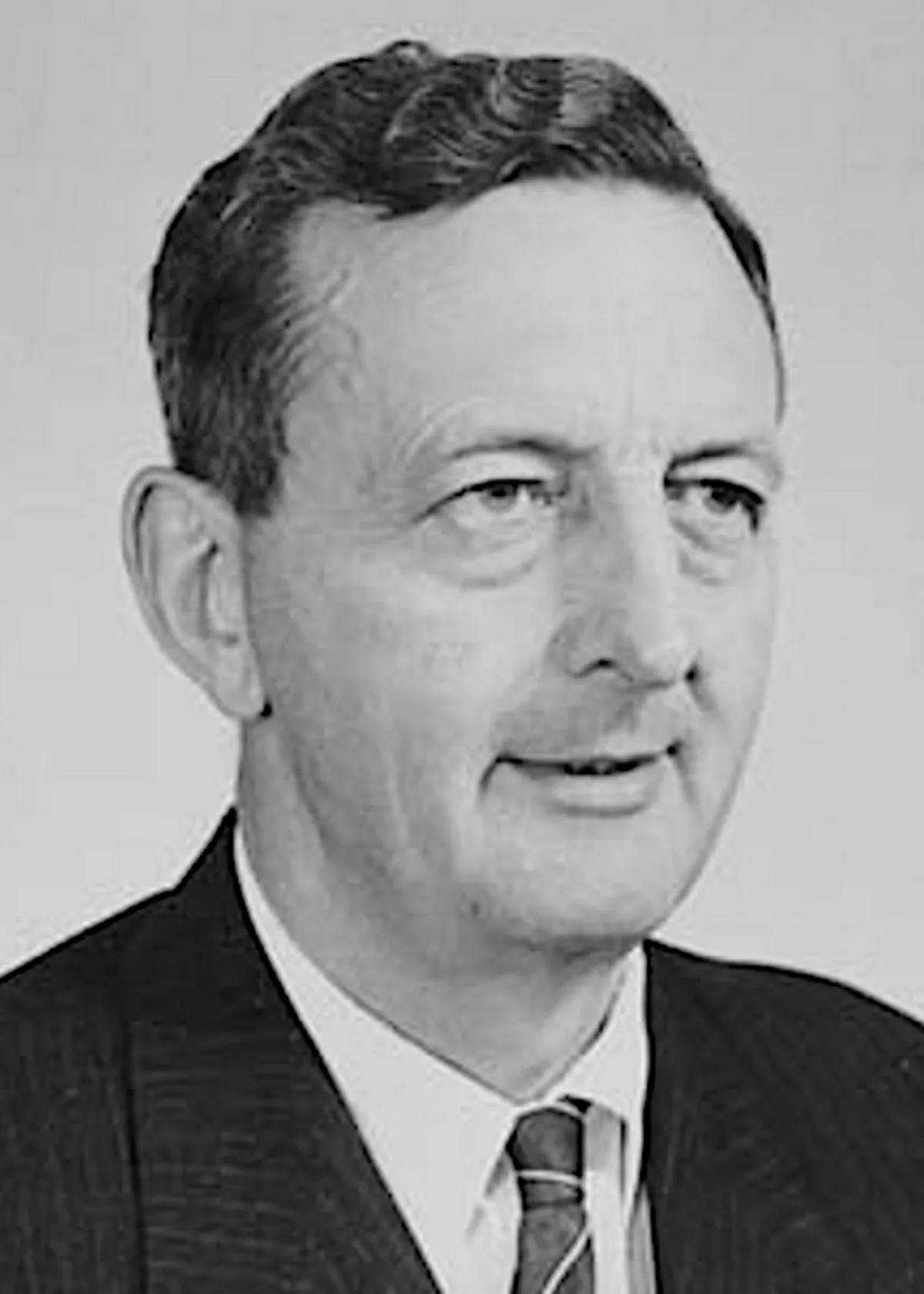 1.
1. Leslie Harry Ernest Bury CMG was an Australian politician and economist.

 1.
1. Leslie Harry Ernest Bury CMG was an Australian politician and economist.
Les Bury was a member of the Liberal Party and served in the House of Representatives between 1956 and 1974, representing the Division of Wentworth.
Les Bury held ministerial office in Coalition governments for nearly a decade, serving as Minister for Air, Housing, Labour and National Service, Treasurer and Foreign Affairs.
Les Bury's education was financed by scholarships and financial assistance from an uncle.
Les Bury graduated Bachelor of Arts in 1934 and was a member of the Cambridge University Conservative Association.
Les Bury assisted general manager Alfred Charles Davidson during the 1935 Banking Royal Commission.
Les Bury married Anne Weigall on 23 August 1940, with whom he had four sons.
Les Bury enlisted in the army in 1942, serving with heavy artillery fixed defences and with the 12th Australian Radar Detachment.
Les Bury worked in the Department of the Treasury in the 1940s and later worked as Executive Director of the International Bank for Reconstruction and Development and the Australian representative on the International Monetary Fund from 1951 to 1956.
Les Bury was elected to the House of Representatives at the 1956 Wentworth by-election, following the resignation of Eric Harrison to become High Commissioner to the United Kingdom.
Les Bury was appointed Minister for Air and Minister assisting the Treasurer in Robert Menzies' ninth ministry in December 1961.
Les Bury introduced the First Home Owners Grant, which continues to be a feature of the Australian political landscape.
In January 1966, Les Bury became Minister for Labour and National Service in Harold Holt's first ministry, during the Vietnam War, when he was responsible for implementing conscription.
Les Bury had some support within the party, including from Peter Howson, and was reportedly Menzies' second most preferred candidate after Hasluck.
Les Bury polled an estimated 16 votes on the first ballot, ahead of only Snedden.
Les Bury remained Minister for Labour and National Service in the first Gorton ministry.
Les Bury's promotion was probably due to his support for Gorton in the 1969 leadership spill, which saw then-treasurer William McMahon challenge for the prime ministership.
McMahon was shifted to foreign affairs and Les Bury took his place as treasurer.
Les Bury was one of the pioneers of the forward estimates system, in March 1971 asking ministers to provide estimates of expenditure for future activities.
Les Bury was an early supporter of a broad-based national consumption tax, akin to the current GST.
Les Bury came into conflict with the more experienced figures of Gorton, McEwen, and McMahon who were not always in agreement with the departmental agenda.
Les Bury opposed the creation of the Australian Industry Development Corporation, preferring the use of foreign capital, but was overridden by McEwen and Gorton.
Les Bury briefly remained treasurer while McMahon assembled his new ministry, then on 22 March 1971 was appointed Minister for Foreign Affairs, the portfolio previously held by McMahon.
Les Bury was abruptly removed from cabinet in a reshuffle on 2 August 1971.
The statement released by McMahon stated that Les Bury had resigned, however Les Bury confirmed that he had in fact been dismissed and "denied suffering any ill health necessitating his removal from office", a response to rumours about health issues circulated by McMahon.
Les Bury was publicly critical of the McMahon government in the immediate aftermath of his dismissal, stating that cabinet ministers had been "leaking like a sieve".
Les Bury reiterated his calls for a broad-based retail turnover tax and supported a national superannuation scheme.
Les Bury was re-elected at the 1972 election, which saw the defeat of the Coalition government.
Les Bury was not included in the shadow ministry formed by new Liberal leader Billy Snedden and remained in parliament as a backbencher.
In December 1973, Les Bury was defeated for Liberal preselection by Bob Ellicott, in a vote which included 17 candidates and required six ballots.
Les Bury died in Sydney in 1986 and was survived by his wife Anne and his four sons, Peter, Michael, John and Nicholas.